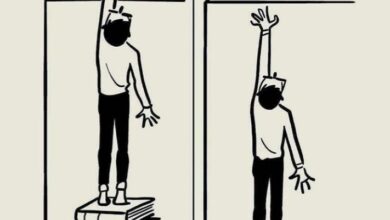Slow Living: A Path to a More Intentional Life

In today’s fast-paced world, we’re often driven by productivity, multitasking, and the desire to achieve more in less time. The constant rush can leave us feeling overwhelmed, disconnected, and unfulfilled. Enter slow living—a lifestyle philosophy that encourages a more mindful, intentional, and fulfilling way of life. Instead of always striving to do more, slow living teaches us to appreciate the present moment, simplify our surroundings, and focus on what truly matters.
What Is Slow Living?
At its core, slow living is about slowing down and being intentional with how we spend our time and energy. It’s a rejection of the hustle culture that values constant busyness and overachievement. Instead, slow living advocates for quality over quantity, whether that means spending more time on meaningful work, nurturing relationships, or simply enjoying life’s little moments.
Slow living doesn’t mean you have to abandon your responsibilities or stop working toward your goals. It’s about creating space to breathe, think, and savor the journey rather than always racing toward the next milestone.
Why Slow Living?
Here are a few reasons why people are embracing the slow living movement:
- Reduced Stress: By intentionally pacing your life, you give yourself the space to rest and recharge. This can lead to lower levels of stress and anxiety, as you’re no longer constantly pushing yourself to meet unrealistic expectations.
- More Mindfulness: Slowing down allows you to practice mindfulness—being fully present in the current moment. Whether it’s a walk in nature, a conversation with a friend, or a meal you prepare, mindfulness can help you enjoy life more fully.
- Deeper Connections: By dedicating more time to the people who matter most, slow living can lead to more meaningful relationships. You’re able to show up fully for others without being distracted by your to-do list or smartphone.
- Greater Fulfillment: Constantly chasing external achievements can feel empty. Slow living shifts the focus from external validation to internal fulfillment, encouraging you to pursue what truly makes you happy and aligned with your values.
- Environmental Impact: Slow living often ties in with a more sustainable lifestyle, as it encourages conscious consumption. You become more thoughtful about what you buy, consume, and waste, which can lead to a reduced environmental footprint.
Related Post
How to Incorporate Slow Living Into Your Life
Ready to embrace slow living? Here are a few practical steps to help you slow down and live more intentionally:
- Simplify Your Schedule: Take a close look at your daily and weekly commitments. Are there activities you can cut back on? Can you say no to unnecessary obligations? Freeing up time in your schedule allows for more flexibility and relaxation.
- Practice Mindful Consumption: Whether it’s clothes, food, or entertainment, take a more thoughtful approach to consumption. Ask yourself if you truly need something before purchasing it. Support sustainable brands or shop secondhand, and aim to live with fewer, higher-quality possessions.
- Create Rituals: Rituals can add a sense of meaning to everyday life. Whether it’s a morning routine, an evening walk, or a weekly family dinner, carve out time for activities that ground and fulfill you.
- Unplug Regularly: Technology often keeps us in a state of constant stimulation, preventing us from being fully present. Set boundaries for your screen time and unplug from devices when possible. Consider tech-free times during the day, like the first hour of your morning or during meals.
- Reconnect with Nature: Slow living often involves reconnecting with the natural world. Spend time outside, whether it’s taking a walk, tending to a garden, or simply sitting in the sun. Nature has a grounding effect, helping you feel more connected to yourself and the world around you.
- Cook and Eat Mindfully: Instead of rushing through meals or relying on fast food, try to savor the process of cooking and eating. Prepare meals from scratch, experiment with new recipes, and enjoy the flavors of fresh, whole foods.
The Challenges of Slow Living
While slow living sounds idyllic, it can be challenging, especially in a world that values speed and efficiency. Some people may feel pressure to stay busy to avoid falling behind in their careers or personal lives. Others may struggle with saying no to commitments or fear missing out on opportunities.
The key to slow living is understanding that it’s not about perfection—it’s about balance. You can still have goals and ambitions, but you prioritize well-being and personal values over the constant need to be productive.
Conclusion: The Beauty of Slow Living
Slow living isn’t about doing less; it’s about living better. It’s about reclaiming time for the things that matter most and allowing yourself the space to breathe and enjoy life’s richness. In a society that often glorifies busyness, choosing to live more slowly is a radical, yet rewarding, act of self-care. If you feel like life is moving too fast and you’re constantly chasing after the next big thing, maybe it’s time to step back, slow down, and savor the present moment. You might find that you’re already living the life you’ve been striving for.
Ready to start living more slowly? What’s one small change you can make today to bring more mindfulness and intention into your life?




